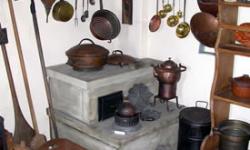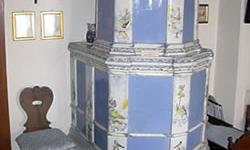Steckborn Museum Im Turmhof, Steckborn, Thurgau, Switzerland
Steckborn Museum Im Turmhof , located in Steckborn, Thurgau, - once domicile of the abbots of the monastery Reichenau - displays on three floors the 6000 year old history of Steckborn and its neighborhood. It all began with the pile dwellings, continues with the Romans and the Alemanni to modern times.
Special highlights are the Steckborn kiln engineering, tatting and tin casting. These three subjects have made Steckborn famous far beyond the borders of the Lake Constance region. The industrial history of the city of Steckborn also takes an important place.
The area of Steckborn belonged to the monastery Reichenau in the middle Ages. On the 26th of January 1313, emperor Heinrich VII bestowed upon the abbot of Reichenau, Diethelm von Kastell vor Florenz, the market rights for Steckborn. For a long time, historians believed that the abbot had built here his summer residence in the following years, a rectangular residential tower (9.4 x 12.1 m). The newest research, however, shows that the tower must have been built already around 1280. The tower yard came with a number of rights: fishing and hunting right; the right to bring goods from the Lake to the market toll-free and free of charge, and the right of asylum for refugees for 6 weeks and 3 days.
Hans Deucher, major of the town Steckborn, bought the tower in 1488. Until 1601, it remained in the family. Hans Ulricht and Esaias von Wyden and Hausen bought the building in 1613. They added the round staircase tower. A further extension to render the structure symmetrical, however, was never realized, for reasons not quiet resolved today. The emblem of the Wyden family is still visible today above the entrance.
In 1642 and after long negotiations with the Swiss and Reichenau, the town Steckborn purchased the tower including all rights. From 1665 on, the tower was equipped with apartments. In the 19th century, the building served as working institution for the poor, during some time as school. In 1899, the shingle roof was replaced by a copper roof, since the old, flammable roofs were forbidden in 1886.
The burgess community donated the marvelous building to the Protestant church community in 1902 by which it is still owned today. Since 1937, the museum im Turmhof is housed in these ancient walls.


Steckborn Museum Im Turmhof reviews
Login to comment